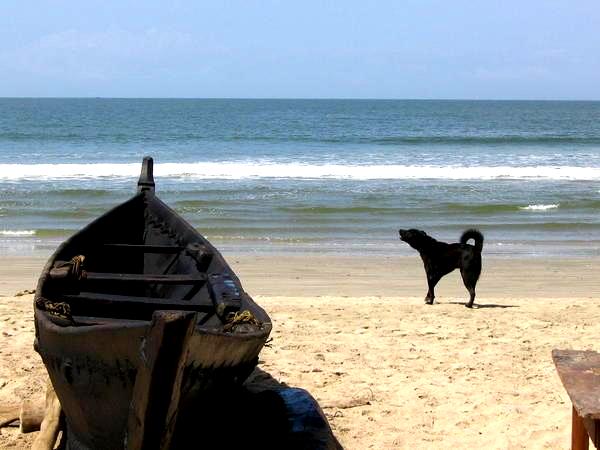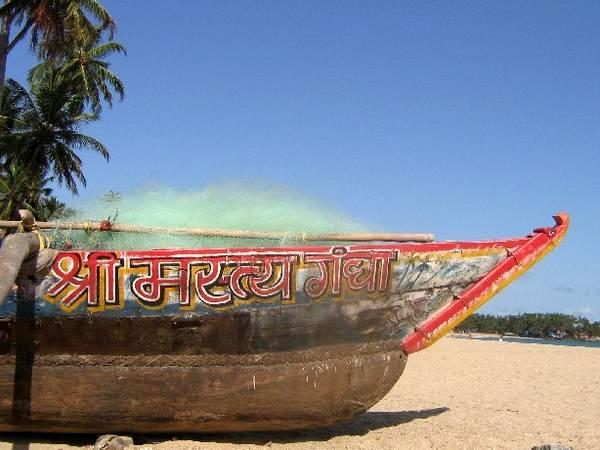 My backpacking days are over. As I glide slinkily through my mid-20s, I wonder with incredulity at the energy of my youth, my prior propensity for scruffy misadventure, my predilection for ‘roughing it’. These days, I appreciate the joys of an air-con queen size over a bug-ridden bunk; I would rather quaff one finely mixed Cosmopolitan than knock back a six pack; I have learned the eternal necessity of the manicure.
My backpacking days are over. As I glide slinkily through my mid-20s, I wonder with incredulity at the energy of my youth, my prior propensity for scruffy misadventure, my predilection for ‘roughing it’. These days, I appreciate the joys of an air-con queen size over a bug-ridden bunk; I would rather quaff one finely mixed Cosmopolitan than knock back a six pack; I have learned the eternal necessity of the manicure.
I realise all this as I stand at the baggage carousel in Bombay international airport, watching in horror as the dark hulk of canvas with my luggage tag twists its way closer to me. Where is my beautiful hard candy pink suitcase on wheels? Still in the store where I initially coveted it, I ruefully sigh. South East Asia, a backpack and me – divorce proceedings are being initiated before I’ve even left the altar.
 Yet I have come here for a reason, I silently argue as I let the pack slide past me for another carousel rotation. I have a spirit of adventure, a desire to explore all corners of this globe, even the shabby and the dusty. I also have an Irish Catholic guilt complex that my life has been privileged to date, I should use my younger years not just for self-betterment but to give something back to those less fortunate than myself. I want my travel experiences to be meaningful, ethical, not just pleasurable. But can’t I do both?! Can’t I traverse the backpacker trail of South East Asia, exploring challenging environments, contributing in some small way to these countries’ development, and yet still enjoy some of my creature comforts? Must I wear dreadlocks and Birkenstocks and renounce regular showering to fill my desired role of globe-trotting do-gooder? Surely my need for occasional self-indulgence and pampering should not negate being positive force in this world?
Yet I have come here for a reason, I silently argue as I let the pack slide past me for another carousel rotation. I have a spirit of adventure, a desire to explore all corners of this globe, even the shabby and the dusty. I also have an Irish Catholic guilt complex that my life has been privileged to date, I should use my younger years not just for self-betterment but to give something back to those less fortunate than myself. I want my travel experiences to be meaningful, ethical, not just pleasurable. But can’t I do both?! Can’t I traverse the backpacker trail of South East Asia, exploring challenging environments, contributing in some small way to these countries’ development, and yet still enjoy some of my creature comforts? Must I wear dreadlocks and Birkenstocks and renounce regular showering to fill my desired role of globe-trotting do-gooder? Surely my need for occasional self-indulgence and pampering should not negate being positive force in this world?
My first stop would be Goa, the tropical idyll on the west coast of India, south of Bombay, with its roots in hippie crustiness but recent development of glamourous panache – rather like me. My destination was Palolem, an idyllic curve of beach nestled between palm trees, where the only developments are a few restaurants and little clusters of coconut huts on stilts. The water of the Arabian Sea is deliciously warm with gentle waves, the sand is soft and yellow, the drinks are cold (most bars offering 2 for 1 cocktails at Happy Hour – a lovely way to watch the sun go down), the food is sensational (I love the malai kofta, an out of this world veggie explosion, and anything with prawns, which are the size of tennis balls) and everything is cheap as chips (in fact, I generally find chips to be ridiculously over priced, so cheaper than chips).
Days in Palolem are spent alternating between sea, sun lounger and beach bar, where waves lap up to the steps and the bronzed blissed out clientele sit stretched out on cushions on the ground.
The only punctuation to remind you that you’re in Goa, India (as opposed to any other paradise destination) is the occasional beach seller, strolling the shore in full sari, chatting casually to would-be customers. These women are mostly from the north of India, particularly Rajasthan, and as I lounged in the sun, they would tell me stories about life back home, their traditions and culture and the huge differences between the conservative, poverty-ridden Jaipur or Gujarat and laidback, prosperous Goa. They spend the high season in Goa selling clothing and jewellery until monsoon hits, then return home to their families, with whom they spend the rainy months without any form of income. Therefore, they told me, it is imperative that they sell as much as they can in Goa before the end of the season, to keep their families fed in the months ahead. It was about 10 days until monsoon was due to hit – what sort of a humanitarian would I be if I didn’t help?
Four rough silk skirts, two outrageously bright tops, two silver anklets, three colourful necklaces, two handwoven bedspreads, three intricate henna tattoos, a mirrored jewellery box and a toe ring later, and I strike on an idea. I shall establish my own one-woman NGO mission to support the cottage industries of the migrant workers of India and beyond. I can pander to my self-indulgence and pamper myself pretty, while keeping a finely made-up eye on the socio-economic development of my target nations. My nemesis of a backpack may burst and my wallet may lighten, but a number of households in Rajasthan will be enjoying a more prosperous monsoon season, for a start. I shall begin ‘Pampering for Prosperity,’an ongoing re-evaluation of the concept of backpacking, charity and travel in developing countries. I shall be relentless in my pursuit of a good time for a good cause. And I suspect I’m going to enjoy it.
By the way, Palolem can be reached by train to Margao or Canacona Station with Indian Railways from Mumbai (Bombay) and most transport hubs within Western India. Palolem beach is a short taxi journey from Canacona and a 40km bus journey from the more regularly served Margao. Accommodation is mostly in coconut huts with fan and mosquito net, which can usually be arranged on arrival. Palolem effectively ‘closes down’ during the monsoon season, from June to September. For more info visit Palolem.